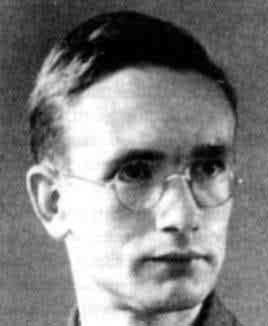<Back to Index>
- Mathematician Paul Julius Oswald Teichmüller, 1913
- Composer and Piano Builder Ignace Joseph Pleyel, 1757
- Field Marshal of the Russian Empire Ivan Yurievich Trubetskoy, 1667
PAGE SPONSOR

Oswald Teichmüller (June 18, 1913 – September 11, 1943) was a German mathematician who introduced quasiconformal mappings and differential geometric methods into complex analysis.
Teichmüller was born in Nordhausen. He grew up in Sankt Andreasberg and earned his Abitur in 1931. In the same year he started studying mathematics at the University of Göttingen. Among his professors were Richard Courant, Hermann Weyl, Otto Neugebauer, Gustav Herglotz, and Edmund Landau. Teichmüller received his doctorate in 1935 under Helmut Hasse.
He joined the NSDAP in July 1931 and became a member of the Sturmabteilung in August 1931. In 1933 he organized the boycott of his Jewish professor Edmund Landau. In 1936 and 1937 he attended lectures by Nevanlinna, who sympathized with the Third Reich, where he was a guest professor and, like Brouwer was also considered by the Nazis as "politically reliable" (Rudolf Heß was in charge of the assessment). Under
the influence of Nevanlinna he specialized in geometric function
theory. Upon personal authorisation from the Führer, he joined the Wehrmacht in 1939 and was killed in fighting on the Eastern Front. The theory of Teichmüller spaces (a moduli space theory for Riemann surfaces) was developed by Lars Ahlfors, Lipman Bers and others. The Teichmüller representative or Teichmüller character is a construction with p-adic numbers. Much of Teichmüller's work was published in Deutsche Mathematik, a highly ideological journal founded by Ludwig Bieberbach that
contained not only scholarly articles but also race propaganda. Because
of the nature of the journal, his papers were hard to find in modern
libraries before the publication of his collected works.